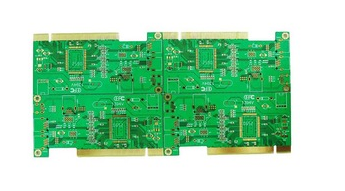In order to facilitate customers to achieve efficient and high-quality electronic assembly, Delsheng provides customized printed circuit board services, including fast proofing of circuit boards, circuit board copying, and circuit board mass production services. As long as the circuit board design documents are provided, and the relevant requirements are matched, Xunde will produce high-quality PCB boards that meet the design requirements in time.
So, how do SMT processing manufacturers usually carry out PCB design for SMT electronic products? This article will reveal.
The first step: determine the overall goal of the electronic product function, performance index, cost and overall dimensions of the whole machine.
When developing and designing a new product, the performance, quality and cost of the product must first be positioned. In general, any product design requires trade-offs and compromises between performance, manufacturability, and cost. Therefore, at the beginning of the design, the product's purpose and grade must be accurately and precisely positioned.

The second step: electrical principle and mechanical structure design, determine the size and structure shape of the PCB according to the structure of the whole machine.
Draw the outline process drawing of the SMT printed board, mark the length, width, thickness of the PCB, the position and size of the structural parts, assembly holes, and leave the edge size, so that the circuit designer can design the wiring within the effective range.
The third step: Determine the circuit board process plan.
1. Determine the assembly form
The choice of assembly form depends on the type of components in the circuit, the size of the circuit board and the equipment conditions of the production line.
The principle of determining the assembly form of the printed board is usually: following the principle of optimizing the process, reducing the cost, and improving the quality of the product. For example, whether single-sided boards can be used instead of double-sided boards; can double-sided boards be used to replace multi-layer boards with a soldering method as much as possible; mounted components should be used to replace plug-in components as much as possible; manual soldering should not be used as much as possible.
2. Determine the process flow
The selection of the process flow is mainly based on the assembly density of the printed board and the equipment conditions of the SMT production line of the SMT manufacturer. When the SMT production line has two soldering equipment, reflow soldering and wave soldering, the following considerations can be made:
a. Try to use reflow soldering, because reflow soldering has the following advantages over wave soldering:
√ Small thermal shock to components;
√ Good consistency of solder composition and good solder joint quality;
√ Surface contact, good welding quality and high reliability;
√ Self alignment effect (self alignment) suitable for automated production, high production efficiency;
√ The process is simple, and the workload of repairing the board is very small, which is conducive to the saving of manpower, electricity and materials.
b. Under the mixed assembly conditions of general density, when SMD and THC are on the same side of the PCB, use A side printing solder paste, reflow soldering, and B side wave soldering process: when THC is on the A side of the PCB, SMD is on the PCB For the B side, the B side glue and wave soldering process are used.
c. Under high-density hybrid assembly conditions, when there is no THC or only a small amount of THC, double-sided printing solder paste, reflow soldering process, and a small amount of THC can be used as a post-attachment method; when there is more THC on the A side, Adopt A-side printing solder paste, reflow soldering, B-side dispensing and wave soldering processes.
Note: On the same side of the printed circuit board, it is forbidden to use the process of flow soldering SMD first, and then wave soldering THC.